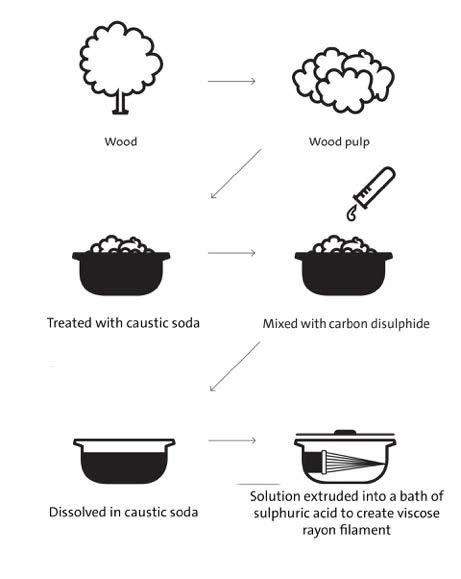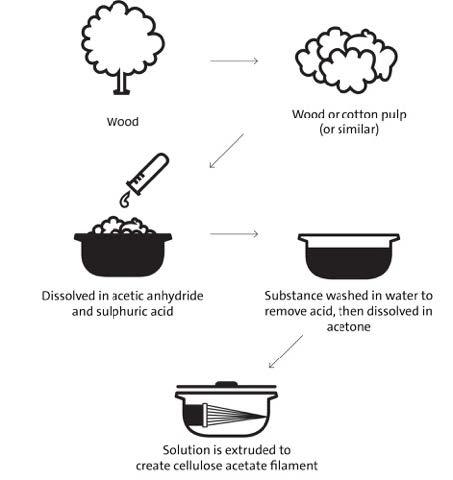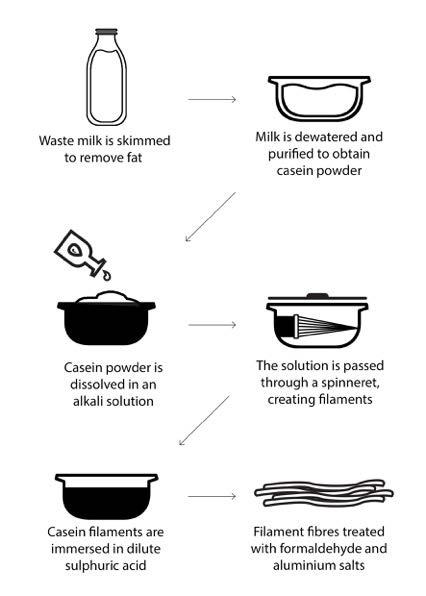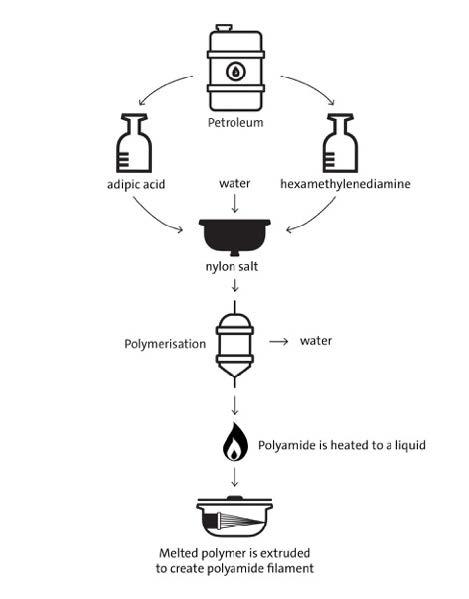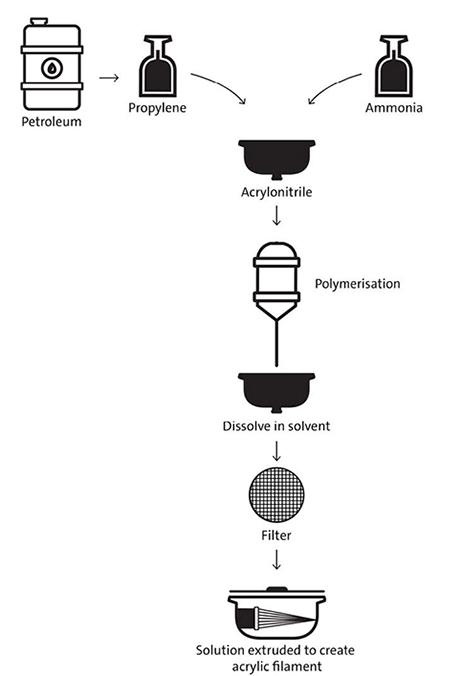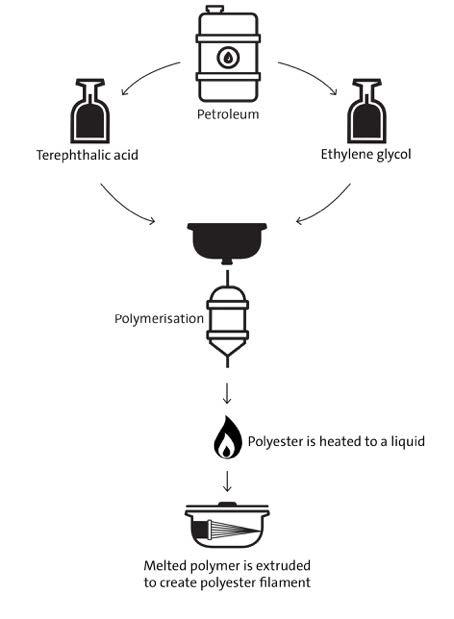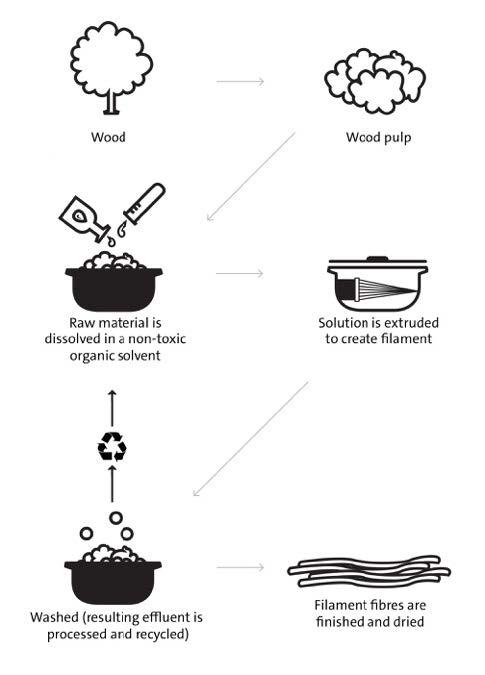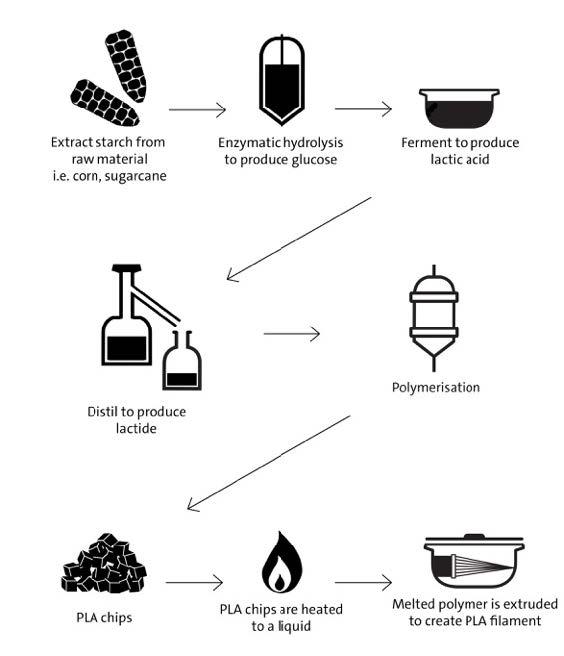How the starting material is converted into the fibre product can be hard for those lacking a scientific background to understand. The following graphics provide a simplified visual explanation of the process from the starting material to the creation of usable fibres for seven of the most frequently encountered semi-synthetic and synthetic fibres. They are presented in the order in which the fibres were invented to provide a sense of how the processes developed and were refined.

